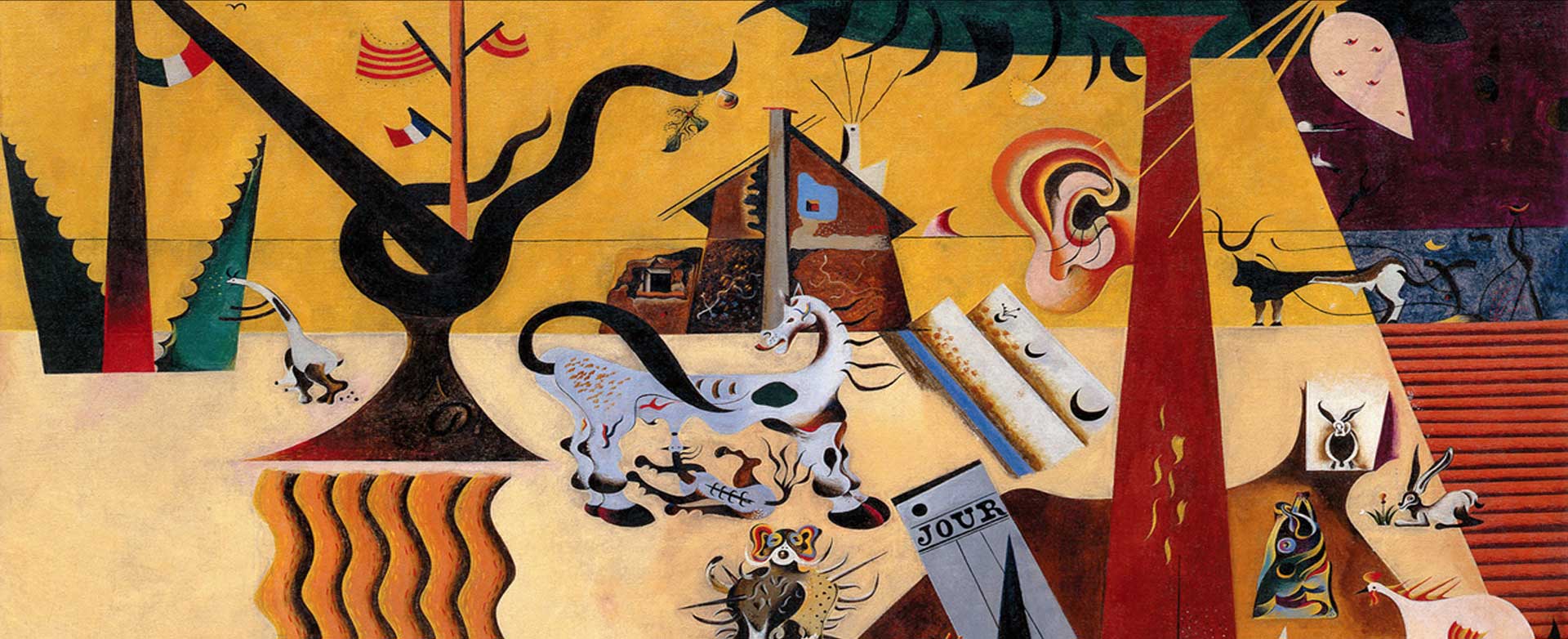Pigs and Art
Pigs possess the power of a remarkable evocative complexity, incessantly interweaving the mythical universe with traditional knowledge and ancient science, floating between the human world and wilderness, between culture and nature.
The Pig: Between the Sacred and the Profane
The collective imagination has always seen the pig as two-fold. On the one hand, the pig is an object of contempt, the metaphor par excellence of abjection and bestiality, but on the other hand, it is a sacred victim or even a benefactor.
According to an old legend, it was a “shrewd” piglet who helped Saint Anthony steal fire directly from Hell and give it to Mankind.
Once in front of the gates of Hell, St. Anthony knocks and asks to get in. The devils, knowing who he was, have no intention of opening the door for him. However, the Saint’s travelling companion - a little pig - manages to sneak in and cause a real commotion. The devils, failing to capture the piglet, turn to Saint Anthony for help. Finally in, far from retrieving the animal, the Saint begins to torment the devils with his stick, causing them to stumble and fall. The enraged demons take the stick away from him and stick it into the fire. The piglet seizes the opportunity to resume messing around. At this point, Saint Anthony asks that the stick be returned, in exchange for peace and tranquillity. The devils accept unaware of the deception: a spark has entered the stick and is burning away, without them noticing. Upon leaving Hell, Saint Anthony raises the stick with its burning end and distributes fire on earth, to the great happiness of all humanity.
PorcArt Video produced by Officina Rambaldi
The Pig: from Woods to Sties
In the Middle Ages, herds of pigs – at times by the dozens, others by the hundreds – used to run the woods led by the swineherd of by the elder boar.
Pigs breeding in the wild played such a crucial role in the economy and in the mentality of the time that the woods were literally measured in pigs. Indeed, their surface was expressed according to the number of pigs that could be bred there.
Starting from 1200s, pigs gradually abandon the woods to live in sties, their sylvan identity lost to farming.
Only a few pigs are left to roam freely in the woods, while permanent pigsties are being built within individual farms.
Pigs shall continue feeding on acorns, though no longer directly under oak trees. Now, it is the farmer who collects the acorns and feeds the pigs.
Pig Butchering
In the Middle Ages pigs were killed during the final days of Autumn, in the months of November and December, basically at the end of the pasturing season.
The Medieval epic literature recounts that the main parts of a pork – the hind legs, steaks, head… - were distributed according to a strict social hierarchy. The best parts went to the King and Queen, second best to the Court, and the remains to the rest of the household.
The awarding of the noble parts of the pork – and of the hind legs, in particular – became a matter of dispute when not a cause for duels and wars.
The Pig and Daily Life
Pigs are a part of our daily lives, no one is exempt from mingling with them in one form or another. They are the companions of our adventures and misadventures. Above all, they are the bearer of exuberance and gaiety.
Many a pig trot, roll and play both on the sweet-smelling and prosperous earth and inside our homes.
In the kitchens of the wealthy, the fate of pork undergoes alternate fortunes, swinging from bias and contempt to bursts of love accompanied by triumphal exaltations. In the kitchen, or better, in the home of the farmer, pigs have always been a sign of wealth, both in rich and poor times.


































